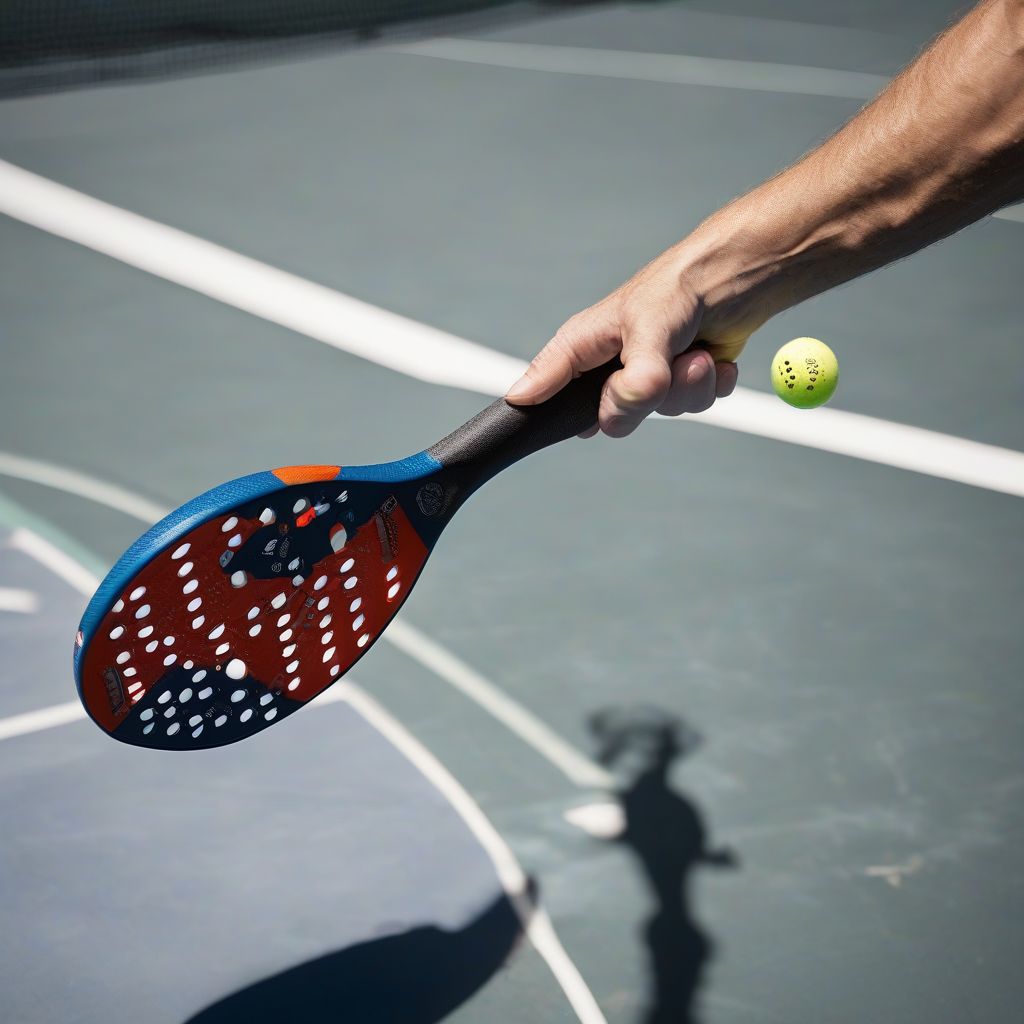Have you ever played against a pickleball opponent who seemed to know exactly what you were going to do before you even did it? They effortlessly returned your serves, anticipated your shots, and left you feeling completely outplayed. While some players might have an uncanny sixth sense, the truth is they are likely masters of reading body language.
In the fast-paced world of pickleball, where strategy and quick thinking are paramount, understanding your opponent’s body language can be the difference between a winning shot and a missed opportunity. It’s like having a secret weapon, allowing you to anticipate their moves and gain a competitive edge.
Decoding the Silent Signals: Key Body Language Cues
Just like poker players watch for tells, pickleball players can pick up on subtle cues from their opponents. Here are some key areas to focus on:
1. The Eyes: Windows to their Intentions
- Direction: Where your opponent is looking is a huge giveaway. If their eyes dart towards the line as they prepare to serve, chances are they are aiming for a sharp angle shot.
- Focus: A player deeply focused on the ball, with minimal blinking, might be planning a powerful return. On the other hand, unfocused or wandering eyes could indicate nervousness or a lack of confidence.
2. The Paddle: A Telltale Sign of their Strategy
- Grip: A tight grip often reveals a player who is about to hit a powerful shot, while a relaxed grip suggests a softer shot or perhaps a drop shot.
- Angle: The way a player angles their paddle face before hitting the ball provides vital clues. An open paddle face suggests a cross-court shot, while a closed face indicates a down-the-line shot.
 Pickleball paddle grip
Pickleball paddle grip
3. Footwork: Revealing their Movement and Positioning
- Weight Shift: Pay close attention to your opponent’s weight distribution. A player leaning forward is likely preparing for a volley or a quick attack. Conversely, leaning back suggests they’re anticipating a lob or a defensive shot.
- Foot Placement: Widely spaced feet often indicate stability and readiness for a powerful shot, while feet close together might signal a quick change in direction or a drop shot.
4. Body Posture: A Reflection of Confidence and Intent
- Upright vs. Hunched: An upright posture exudes confidence and suggests the player is in control. In contrast, a hunched or tense posture might signal nervousness or hesitation.
- Relaxed vs. Stiff: A relaxed player is often more dangerous as they move fluidly and adapt to the game. On the other hand, stiff or rigid movements can indicate tension or predictability.
Putting It All Together: Using Body Language to Your Advantage
Reading your opponent’s body language is not about becoming a mind reader, but rather a keen observer. By noticing these subtle cues, you can anticipate their shots, exploit their weaknesses, and gain a competitive edge.
Here are some tips for integrating body language analysis into your game:
- Start with Observation: Don’t overthink it! Begin by simply observing your opponent’s mannerisms and patterns.
- Focus on the Basics: Master the key body language cues mentioned above before trying to decipher more nuanced signals.
- Context is Key: Consider the game situation when interpreting body language. A player might exhibit different cues depending on the score, their position on the court, or their playing style.
- Practice Makes Perfect: The more you consciously observe body language, the better you’ll become at reading your opponents and responding effectively.
Beyond the Court: Body Language as a Tool for Growth
Mastering the art of reading body language in pickleball is not just about winning matches; it’s about elevating your entire game. As you become more attuned to your opponent’s non-verbal communication, you’ll also develop a deeper understanding of your own body language and its impact on your performance.
Remember, pickleball is a game of strategy, skill, and mental fortitude. By adding body language analysis to your arsenal, you’ll unlock a new level of awareness and unlock your true potential on the pickleball court.
So, next time you step on the court, pay close attention to your opponent. Their body language might just be the key to unlocking your next victory.
- Baker, Joe (Author)
- English (Publication Language)
- Callahan, John (Author)
- English (Publication Language)
- Hall, Dennis (Author)
- English (Publication Language)
- Leach, Gale (Author)
- English (Publication Language)
- Jilson, Ben (Author)
- English (Publication Language)
- Carnot, Prem (Author)
- English (Publication Language)
- Bond, Payton (Author)
- English (Publication Language)
- Moore, Daniel (Author)
- English (Publication Language)
- Hill, Cade (Author)
- English (Publication Language)
- Biff, Jaden (Author)
- English (Publication Language)




![Pickleball for Beginners: Level Up Your Game with 7 Secret Techniques to Outplay Friends and Ace the Court [III EDITION]](https://m.media-amazon.com/images/I/51la8IS6C4L._SL160_.jpg)





